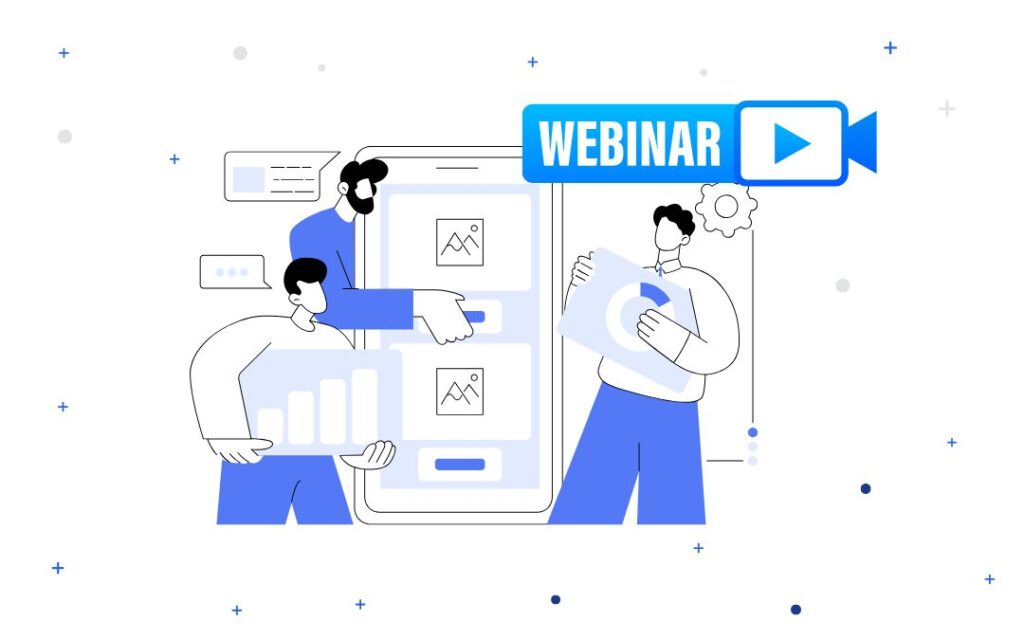Webinars have become one of the most essential tools in the modern digital marketer’s toolkit. They offer a unique way to engage audiences remotely on a wide array of topics.
But have you ever wondered if hosting a webinar is worth the time, effort, and costs involved? While they can seem like a great tool for building and engaging an audience, what matters at the end of the day is the return on investment.
That’s why in this post we’ll share 39 compelling statistics from recent research that demonstrate how webinars can help you achieve your marketing goals.
Whether you are looking to showcase value to leadership or optimize future events, this quantifiable data illustrates precisely how webinars compare to other tactics and drive tangible results.
Considering hosting webinars for your business? Explore how AEvent’s advanced automations can increase attendance and double your show-up rates. Schedule a demo today!
Leveraging Webinars in Marketing

Let’s start with some notable stats on how webinars help marketers connect with their target audience.
Engaging Target Audiences
Unlike other digital marketing tools that offer primarily one-way communication, webinars facilitate dynamic two-way interaction.
To fine-tune audience targeting based on behavior, we offer advanced segmentation features.
This heightened engagement through webinars leads to better audience understanding, higher retention rates, and more effective communication of marketing messages.
Here are some stats on the power of webinars to engage your target audience:
1. 99% of marketers surveyed said webinars represented a critical element of their marketing plan (Statista, 2023).
2. 92% of professionals believe webinars are the best way to engage a large remote audience (Goto).

Attendance, engagement, and conversion rates for webinars also indicate its effectiveness as a marketing tool:
3. Between 40% and 50% of people who register for a webinar will eventually attend it (Cloudincome, 2024).
4. Webinar attendees are willing to engage deeply. On average, attendees watch a webinar for 57 minutes (Goto).
5. Also, webinars achieve 43% more attention and retention than other content formats (ON24, 2021).
6. With these impressive engagement numbers, you can imagine why 67% of sales teams prioritize leads coming from webinars (Businesswire, 2021).
Moreover, webinars are a preferred learning format for a significant majority of B2B professionals.
7. Around 91% of B2B professionals consider webinars the top learning format (Search Engine Journal, 2019).
This preference indicates the value and effectiveness of webinars in conveying information and engaging with a professional audience.
Keep in mind though that attention spans vary based on the webinar’s value and relevance.
8. For instance, participants in marketing webinars engage for around 52 minutes, while those attending training webinars stay engaged for approximately 61 minutes (Goto).
Extending Brand Reach
Aside from being a high-engagement platform, marketers favor webinars for their ability to extend brand reach and scale marketing efforts efficiently.
9. 76% of marketers acknowledge webinars as a tool that helps them reach more leads (ON24, 2024).
10. Additionally, 69% believe webinars assist in scaling marketing efforts, and 49% find them effective in reaching targeted accounts (ON24, 2024).
Quantifying Webinar ROI

When assessing the value of any marketing channel, the proof is in the data.
Webinars remain one of the top methods for lead generation and revenue conversion – when executed effectively.
Webinar ROI
These statistics show how lucrative attendee conversions can be and how efficiently webinars outperform other top-of-funnel channels:
11. Between 20% and 40% of those who attend a webinar become qualified leads (OptinMonster, 2024).
12. 72% of marketers believe that webinars significantly influence their sales pipeline and revenue generation (Businesswire, 2021).
13. Meanwhile, 53% believe that webinars create the highest quality leads of any top-of-the-funnel channel (HubSpot, 2024).
14. The conversion rate for webinar landing pages can reach up to 51%, indicating their high effectiveness in attracting leads (Outgrow, 2023).
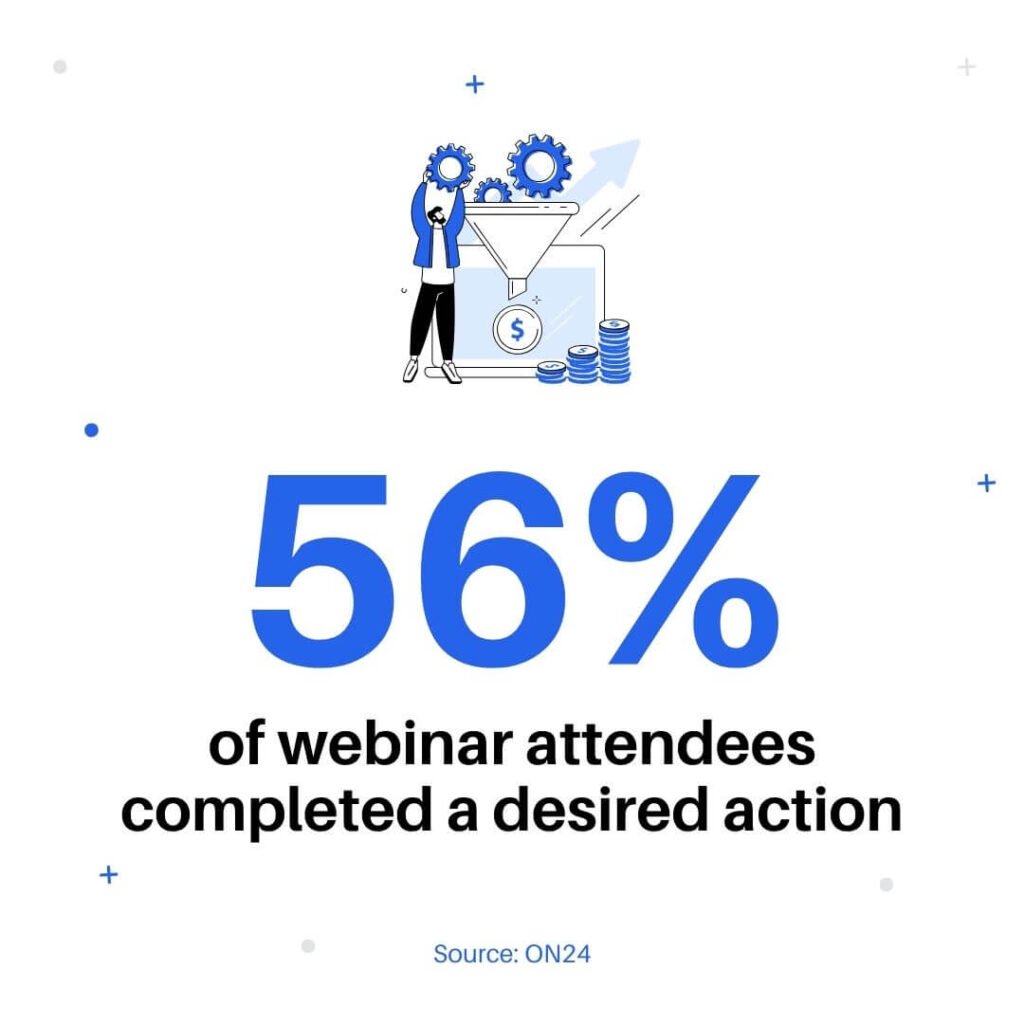
So how do webinars compare to other marketing channels?
15. In one survey, 89% of marketers said webinars outperformed other channels in creating qualified leads, while 78% of respondents said webinars helped lower their cost per lead (Statista, 2023).
16. Approximately 15% of individuals attending webinars end up buying the product or service offered, a conversion rate notably higher than the roughly 2% success rate of cold calls and 1% for cold emails (Cloudincome, 2024).
17. Moreover, the average webinar conversion rate was 56%, meaning more than half of all webinar participants completed a desired action set by businesses (ON24, 2023).
Cost-Effectiveness of Webinars
Webinars emerge as a notably budget-friendly option, primarily due to the absence of costs typically associated with physical events, such as travel, venue rental, and catering.
This aspect makes them a particularly attractive choice for organizations seeking to disseminate information or engage their audience without incurring high expenses.
18. Webinars can cost as little as $100 to make and run. But technology choices and marketing promotions can drive up costs between $1,000 and $3,000 (Cloudincome, 2024).
19. Webinars are considered cost-effective by marketers as they help lower the cost-per-lead and play a key role in marketing efforts, with 95% of survey respondents viewing them as important (HubSpot, 2021).
20. he average cost per lead for a webinar is approximately $72. This cost is significantly lower compared to other lead generation methods like public relations ($294) and trade show leads ($811) (Popupsmart).
21. That’s why it’s not surprising that 33% of B2B marketers plan to increase their spending on webinars (CMI, 2024).
As more teams rely on AI-generated written content, many marketers believe event marketing (webinars and video) will become necessary.
Enhancing Webinar Performance
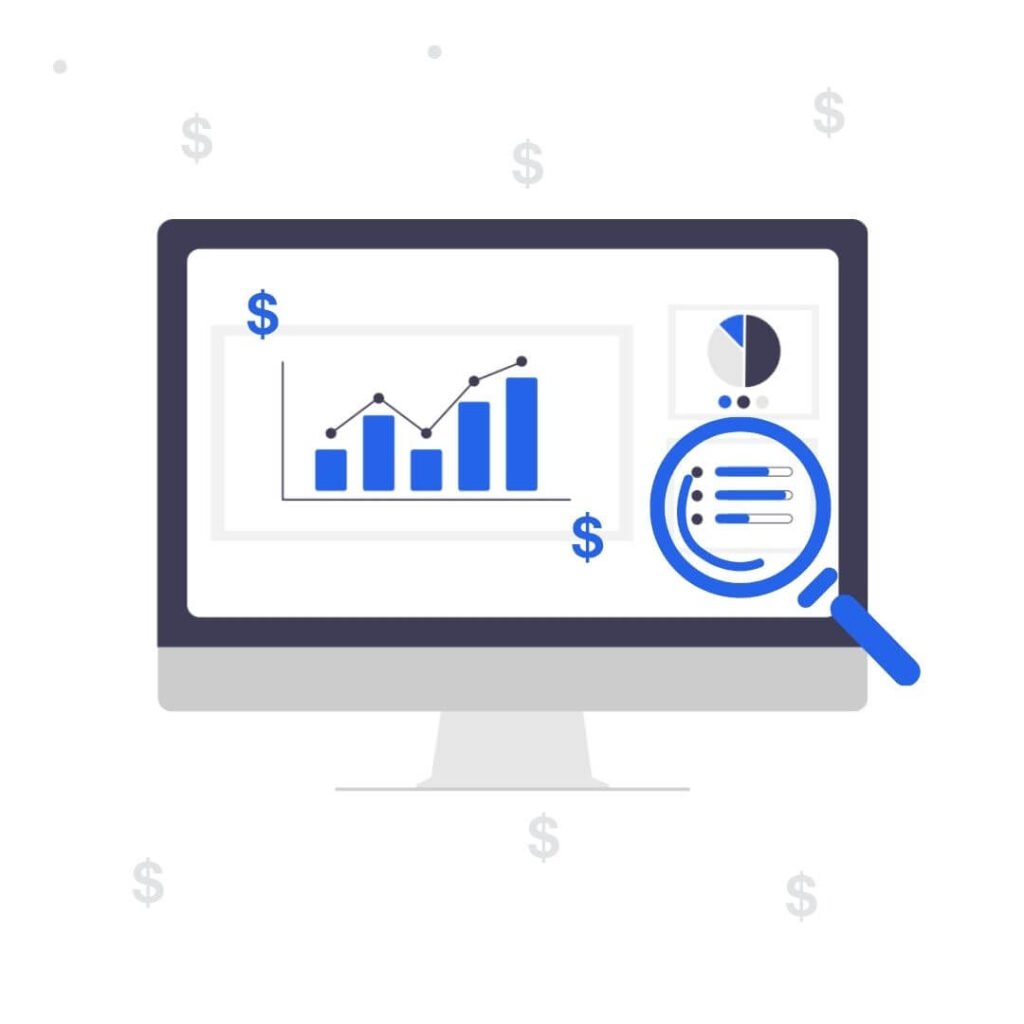
Using the right type of content and engagement strategies helps improve the overall webinar experience, which can ultimately impact your ROI.
Webinar Content
When it comes to content, including a Q&A, interactive polls, and downloadable resources are key to increasing audience engagement.
22. For example, 22% of webinar attendees said they would most like to see a host or presenter who takes questions from the audience (HubSpot, 2021).
23. Also, 82% of attendees cited the Q&A in webinars as the most interesting part of the webinar experience (ON24, 2024).
24. And 67% of attendees said downloadable resources are necessary for a webinar’s effectiveness, while 32% said surveys are important (ON24, 2024).
You should also consider including a video in your webinar. More marketers are using video to increase webinar engagement and watch time.
25. 66% of all live webinars featured some video (Businesswire, 2021).
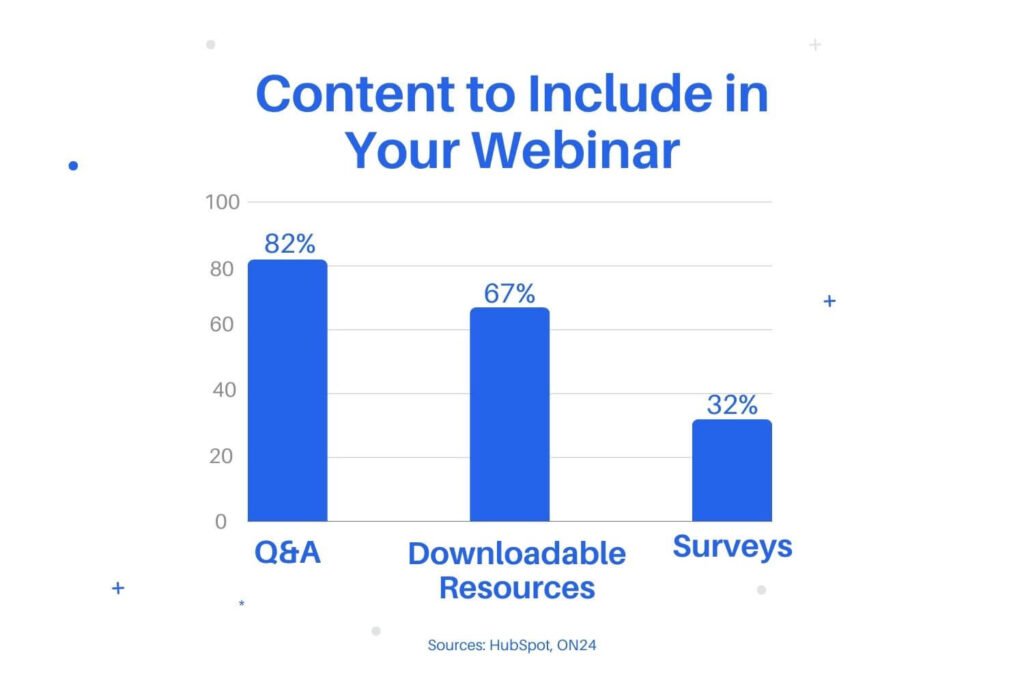
Webinar Consumption
The shift in webinar viewing habits demonstrates a clear trend toward flexible content consumption.
26. Data shows live-only attendance accounts for 53% of webinars while on-demand viewing accounts for 43%. (Businesswire, 2021).
Marketers have caught up with this trend, adapting their strategies to accommodate the growing preference for on-demand content.
27. Around 58% of webinar hosts now utilize a combination of live streaming, evergreen webinars, and on-demand recording, allowing participants to access and review the content post-event (Cloudincome, 2024).
28. A whopping 47% of webinar views occur within ten days following the event. This underscores the importance of making webinars available on-demand to maximize reach and engagement (Zippia, 2022).
Since webinars offer a flexible way for audiences to consume content, marketers are increasingly adopting webinars as a key content distribution channel.
29. 51% of B2B marketers cited webinars as among the top-performing channels for content distribution (CMI, 2024).
30. Also, 61% of marketers said webinars are their most effective video marketing platform (Wyzowl, 2024).
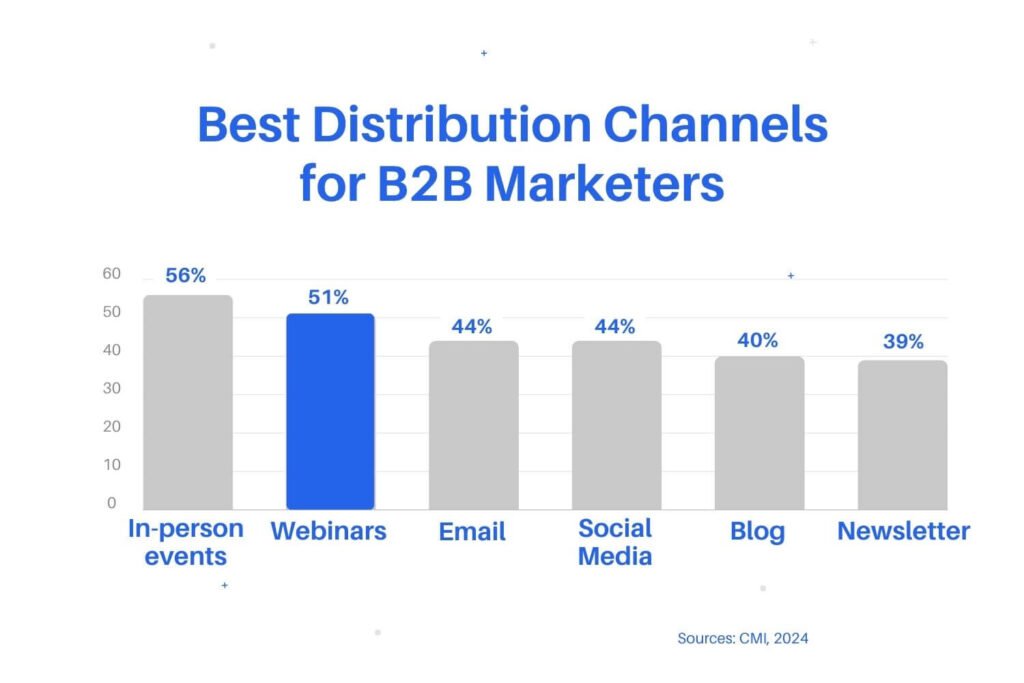
Webinar Length
One of the most debated topics in webinars is its length. How long should it be? Is there a sweet spot?
31. A typical webinar lasts 60 to 90 minutes (Brightedge).
This duration is often chosen to provide ample time for a comprehensive presentation along with a Q&A session, ensuring that all aspects of the topic are thoroughly covered.
However, more and more attendees prefer shorter webinars.
32. For example, 44% of attendees prefer webinars to last 45 minutes, while 41% like webinars to last 30 (Cloudincome, 2024).
To find the best length for your webinar, consider your webinar topic, purpose, and audience’s attention span.
For instance, detailed technical training might necessitate a longer format, whereas a brief product introduction could be effectively communicated in a shorter session.
One pro tip to keep in mind: if you’re using webinars to sell a product, especially in the infoproduct or bizopp space, stay on until people stop buying.
Webinar Promotion
How and when you promote your webinar significantly impacts webinar show rates and overall success.
33. Promoting a webinar four weeks before the event typically leads to a 12% increase in registrations (Cloudincome, 2024).
34. Email stands as the most effective channel for promoting webinars, contributing to 57% of registrations (Goto).
35. You can increase email engagement if you send your emails from 9am to 12pm and 12 to 3pm in your audience’s time zone (HubSpot, 2023).
36. The best day to send your email is Tuesday (HubSpot, 2023).
Apply these webinar email reminder strategies to help maximize attendee numbers and enhance the effectiveness of your marketing efforts.

Webinar Schedule
Your webinar schedule is another important thing to consider when planning your webinar.
37. Webinars conducted in the morning are 93% more effective than those delivered in the evening (Outgrow, 2024).
38. Specifically, 10am. and 11am are the popular time slots (ON24, 2021).
39. Furthermore, if you hold your webinar on a Wednesday or Thursday, you can increase the chances of more attendees showing up (ON24, 2021).
So aim for morning webinars scheduled mid-week to maximize engagement.
Carefully selecting the date and time based on data can directly impact the success of your event.
Leverage AEvent Automation for Webinar Success
The data speaks for itself – webinars offer an exceptionally effective way for modern marketers to achieve their goals.
From engaging target audiences to quantifying ROI, these events generate high-quality leads and drive revenue at a remarkably low cost compared to other marketing tactics.
To leverage the full power of webinars for your business, take advantage of the various automation features you can access with AEvent.
Our webinar automation platform provides enterprise-grade tools like email automation, SMS, MMS messaging, and WhatsApp integration to maximize your ROI from webinars and online events.
See for yourself how AEvent can help you achieve your goals.
Schedule a demo with AEvent today!



